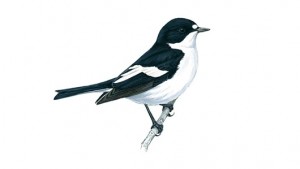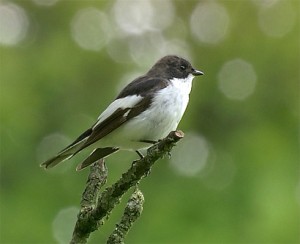Week 23 – 18 December 2016:
The Lives of Birds are Rarely Simple
In eighteen century Europe, when songbirds disappeared from their breeding grounds in autumn, it was hard for many people to believe that they flew thousands of kilometres to spend the winter in more clement regions. Some eminent naturalists imagined that small birds such as swallows burrowed into the mud at the bottoms of rivers and lakes in autumn, only to emerge unharmed in the spring.
Even after centuries of study, many aspects of the migratory behaviour of birds remain a mystery. It is that mystery that makes migration a rich field of study, open to both high-tech and low-tech approaches.
A recent publication by Andrea Harnos and her colleagues at Szent István University, the Hungarian Natural History Museum, and Eötvös Loránd University, all in Budapest, revealed the wealth of information that can result from a low-tech approach to the study of migration. Their report described the result of a study of the small European Pied Flycatcher between 1989 and 2014 as the birds migrated between breeding grounds in Europe and wintering areas in Africa. For 26 years, volunteers erected nets, captured flycatchers, measured them, and documented their age and sex before sending them on their way. The study was conducted in Danube-Ipoly National Park in central Hungary.
Over a period of 26 years, data was collected for 2323 Pied Flycatchers. Among the discoveries of Harnos et al. was that males on their spring migration passed through the study area 11 days earlier in 2014 than they had in 1989, but that females had not changed the timing of their northward migration. No significant changes occurred in the timing of autumnal migration by either sex over the course of the study.
The wings of spring migrants averaged 2 mm longer at the end of the study, and earlier migrants had significantly longer wings than birds who passed through the study area later in the season. In contrast, the wing length of autumn migrants did not change over the study, and earlier arrivals had shorter wings. Of spring migrants, 60% were male, but females accounted for 61% of autumn migrants.
At first glance, this might seem like a confusing collection of results, but Harnos and her colleagues believe that they have untangled the story. In terms of timing, males that arrive on the breeding grounds earlier gain an advantage over later males in terms of attracting a mate; climate warming has likely allowed their average migration dates to shift to earlier dates. For some reason females did not complete their northward migration earlier, so neither breeding nor southward migration could happen earlier.
Other findings are also likely to be related to climate change. Pied Flycatchers have a vast breeding distribution in Europe and Asia, and populations differ slightly in body size. Changes to climate have likely caused shifts in the migration routes of many bird species, such that the research group in Hungary were probably capturing Pied Flycatchers from different populations at the beginning and end of the study. Differences in sex ratio between spring and autumn probably reflects the complex nature of migration, with male and female flycatchers taking different routes between breeding and overwintering grounds.
Anyone seeking simple answers should probably avoid the field of avian migratory behaviour. Even so, you can rest assured that songbirds do not spend the winter underwater.
Harnos, A., Z. Lang, P. Fehérvári and T. Csörgő. 2015. Sex and age dependent migration phenology of the Pied Flycatcher in a stopover site in the Carpathian Basin. Ornis Hungarica 23:10-19.
Photo credits: male Pied Flycatcher – drawing of male Pied Flycatcher - www.rspb.org.uk/birds-and-wildlife/bird-and-wildlife-guides/bird-a-z/p/piedflycatcher/; photo by Rob Vaasse, The Netherlands, May 2003, www.birdforum.net/opus/European_Pied_Flycatcher



